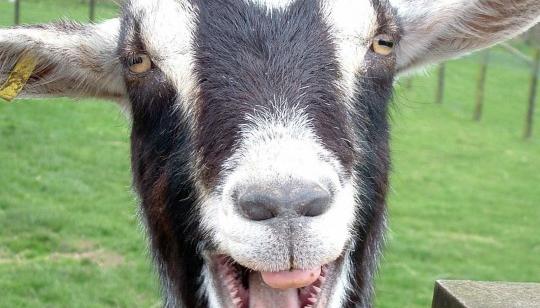
If Woolly had been tagged with an eID tag with a unique electronic number, we would have been able to trace her and the others from Wattle Downs as individual sheep. That's 1,047,280 potentially exposed sheep and more than 130 pathways to follow.īut let's just look at finding Woolly in this instance.

We now have to multiply all of these traces by 26. We also learned that the same breeder which sold the rams to Wattle Downs, sold to 26 other properties. Since we don't know where Woolly ended up or even if she is still at Wattle Downs, we have to trace all movements of all sheep off Wattle Downs Farm through all possible paths that the disease could have flowed through. It's at this point we find out that the rams which were brought onto Wattle Downs Farm, where Woolly had been living, were carrying a disease. Just through Woolly's potential journey, we've come into contact with about 40,280 sheep. 500 sheep from that sale yard and moved to a feedlot housing 8,000 more sheep.įinally, approximately 1,200 feedlot sheep are moved to an export depot where there are already 21,000 sheep. Sometime later, Wattle Downs decides to move a number of their sheep off the property.Ħ0 sheep are sent to the abattoir, where 1,400 others have already been delivered.ħ5 sheep are sent to Shady Tree Farmstead, where there are already 575 head on property.ġ70 sheep are sent to a sale yard to be sold with 6,200 others. Wattle Downs, Farm houses 1,300 sheep, including a few rams, which the owner bought from a breeder. Woolly's being moved to Wattle Downs Farm, along with 400 other sheep. Woolly the sheep lives on River Run Farm with 630 others. Let's look at how we currently track our sheep and goats under our mob-based movement system, meet Woolly. Under the current national system, we track sheep and goats as mobs from property to property, using property identification codes, PIC’s. representatives of retailers, processors and smallgoods.Ī story of mob-based movement vs eID tracing.representatives from peak councils for sheep, wool, goats, beef and/or dairy cattle industries,.representatives from New South Wales, Tasmania, Victoria, Western Australia, South Australia and the Commonwealth (representing the other jurisdictions).independent Chairperson appointed by the NBC (Mr Ron Cullen).Governments and industry are working together towards a mandatory national traceability system using eID for sheep and goats by 1 January 2025. To undertake this work the National Biosecurity Committee established a new government-industry Sheep and Goat Traceability Task Force (SGTTF). The SGTTF provides oversight of the national roll-out of eID for sheep and goats, advising Senior Officials and Agriculture Ministers on key implementation matters. This includes Ministers’ collective agreement to introducing a national mandatory individual electronic identification (eID) system for sheep and goats, working towards 1 January 2025.

In September 2022, Agriculture Ministers reaffirmed their commitment, first agreed in July 2022, for government to work collaboratively with industry to advance work on a national approach to Australia’s livestock traceability systems. National RD&E Priorities for Invasive Plants and Animals 2016-2020Īustralia has world leading livestock traceability systems, and an ongoing reform agenda to ensure these continue to meet and exceed our needs into the future to maintain our biosecurity and enhance export trade.National Environment and Community Biosecurity Research, Development and Extension Strategy 2021-26.National Biosecurity Response Team Arrangements 2017-2019.National Framework for the Management of Established Pests and Diseases of National Significance.National Biosecurity Engagement and Communication Framework.National Transition Program Policy Framework.National Surveillance and Diagnostics Framework.Protocol on biosecurity data and information sharing between the Commonwealth, State and Territory biosecurity agencies.Intergovernmental Agreement on Biosecurity Review Final Report.Intergovernmental Agreement on Biosecurity Review Draft Report.Intergovernmental Agreement on Biosecurity Review Discussion Paper.

Intergovernmental Agreement on Biosecurity Review.Intergovernmental Agreement on Biosecurity.State and territory biosecurity roundtables.National Biosecurity Emergency Preparedness Expert Group.


 0 kommentar(er)
0 kommentar(er)
